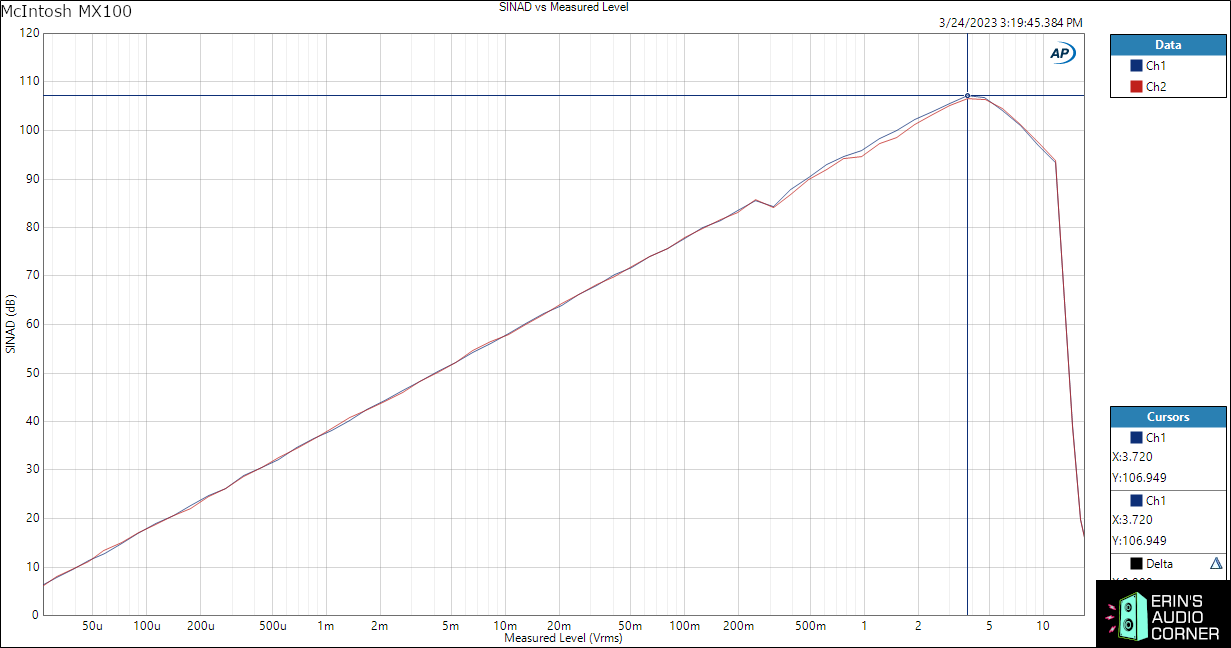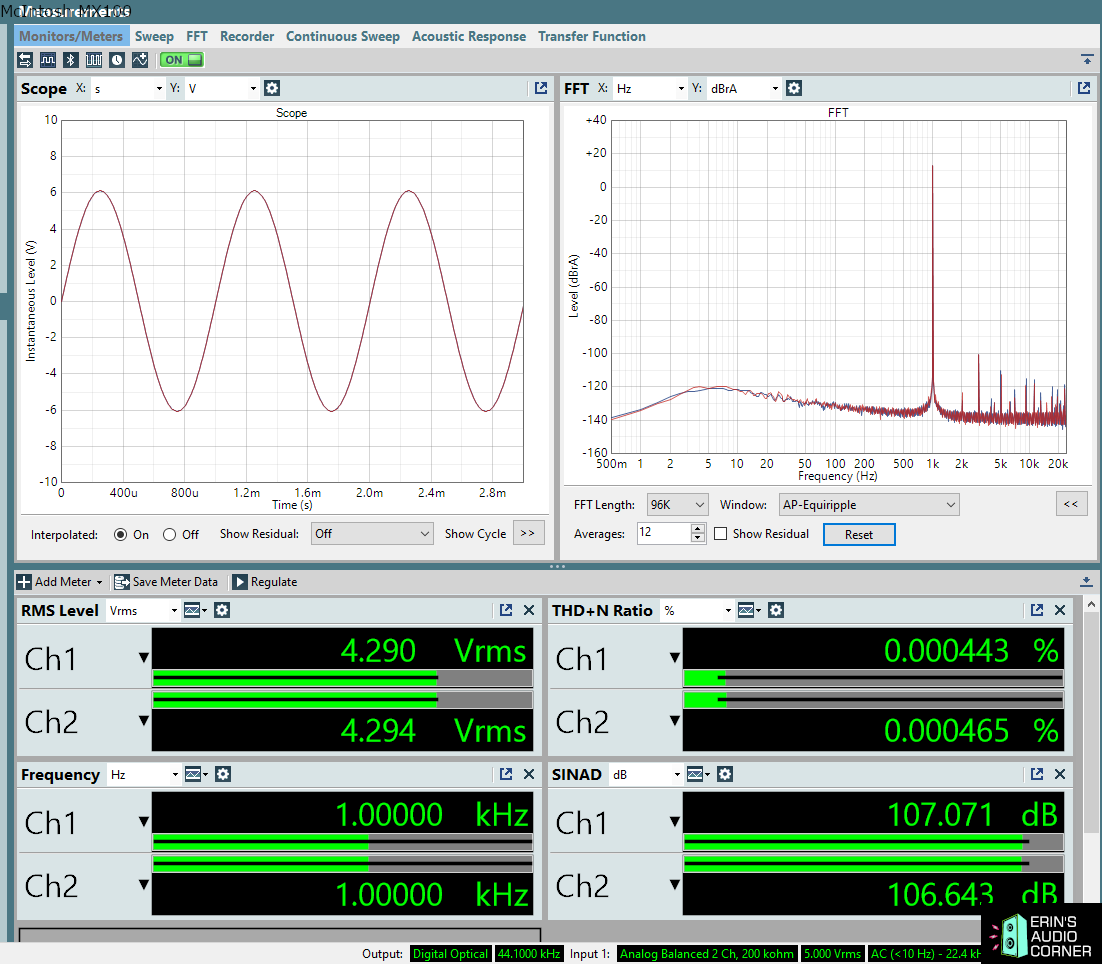Foreword / YouTube Video Review
This A/V Processor was loaned to me by McIntosh. I was not paid nor given anything in return for this review.
All my reviews are done on my own time with great care to giving you all the best set of data and information I can provide in order to help you make a well-informed purchase decision. I offer this for free to all who are interested. In return, if you want to support this site please see the bottom of this review for ways you can help. It is greatly appreciated.
The review on this website is a brief overview and summary of the objective performance of this processor. It is not intended to be a deep dive. Moreso, this is information for those who prefer “just the facts” and prefer to have the data without the filler. The video below has more discussion with respect to the technical merits and subjective notes.
< coming soon >
Information and Photos
Some specs from the manufacturer are below and full specs can be found here.
- 5 HDMI ports: 4K/60Hz; HDCP 2.2; 18Gbps; Rec. 2020; 4:4:4 Color
- Dolby Vision; HDR10; HLG
- 13 Balanced XLR Audio Outputs; 11.2 Audio Channels; eARC/ARC
- Dolby Atmos; DTS:X
- Audyssey MultEQ XT32
- 2U rack mountable
- Has received Connects with Control4 Certification
- Perfect for custom install applications
As of this writeup, the price is approximately $5500 USD.
Test Setup Information:
Testing was conducted using the Audio Precision APx555B.
- Warmup: Unit was turned on for 10 minutes before testing was conducted (output voltage didn’t vary at all the entire time).
- Input to DUT: Optical Toslink.
- Output from DUT: Front Left & Front Right XLR.
- Volume/Gain: Volume knob was set at +4dB*.
- DSP Settings: All DSP options were disabled/bypassed unless otherwise noted.
- “Ch1” = Left Output. “Ch2” = Right Output.
*Note: SINAD of the different output voltages from min to max is provided below. This unit’s volume knob can go up to +18dB which is approximately 16.5vRMS output (located rightmost on the x-axis in the graphic below). While the volume can go quite high, the “sweet spot” for this unit (when playing a full-scale signal) is at about +4 which correlates to approximately 4vRMS. Above this volume/voltage, distortion dominates the output signal quickly. That’s why I chose this volume as my test basis.

Dashboard

Frequency Response
The following is with the BW extended to 96kHz so we can see what happens above 20kHz
The following illustrates what the “Bass” and “Treble” adjustments do compared to the standard frequency response:

Phase
Linearity (Level Sweep)
Crosstalk
Dynamic Range (AES17)
IMD Level Sweep (SMPTE: 60Hz & 7kHz)
Multitone
SINAD (vs Level @1kHz)
SINAD (vs Frequency)
Self Noise
This test was conducted with no input signal applied. The outputs were measured at min and max volume to compare if there is any variable noise floor (like you sometimes get with poor amplifiers or nearfield monitors when you increase the gain). Two things here: 1) I don’t have a basis for comparison to other products but subjectively this unit was dead silent so my guess is this may wind up being my baseline for AV Processors in terms of self-noise and 2) the fact that both the max and min results are the same indicate there is no variable noise generated from this unit as you increase it’s output voltage. This is ideal and expected but unfortunately not always the case.
Subwoofer Channel Frequency Response
The graphic below illustrates the output response of the Front Left (blue) vs the SW1 (Subwoofer 1) output (red). Since standard 2-channel signal will not yield outputs on the MX100’s subwoofer channels the test signal used to conduct this test was the APx Dolby Generator Waveforms: Dolby Digital 1.0 1/6th Octave Sweep which was downloaded from Audio Precision’s website. You can see the LFE channel has a low-pass filter enabled at 100Hz by default. Though, this can be changed to various frequencies from 80Hz to 250Hz. Please see the user’s manual for more information. The below is only given as an example.
Parting / Random Thoughts
See video linked above for subjective and objective analysis. But just a couple notes:
- Technically, the MX100 looks like a solid performer. Very low distortion (at least by AV processor standards), high output voltage capability with plenty of “headroom” on the volume knob for media that is lower in volume (aka: typically having a higher dynamic range).
- This thing is built like a tank. The overall aesthetic screams quality. From the aluminum knobs to the metal casing and what appears to be gold plated XLR pins.
If you are interested in the full test report it is available to Patrons. Hey, I have to figure out some way to offset the insane cost of doing this stuff.
Support / Contribute
If you find this review helpful and want to help support the cause that would be AWESOME! There are a few ways you can do so below. Your support helps me pay for new items to test, hardware, miscellaneous items needed for testing, new speakers to review and costs of the site’s server space and bandwidth. Any help is very much appreciated.
Join my Patreon: Become a Patron!
Shopping
If you want to help but can’t chip in directly and you are shopping at any of the following stores then please consider using my generic affiliate links below to make the purchase through.
Purchases through these links can earn me a small commission - at no additional cost to you - and help me continue to provide the community with free content and reviews. Doesn’t matter if it’s a TV from Crutchfield, budget speakers from Audio Advice or a pair of socks from Amazon, just use the link above before you make your purchase. Thank you!